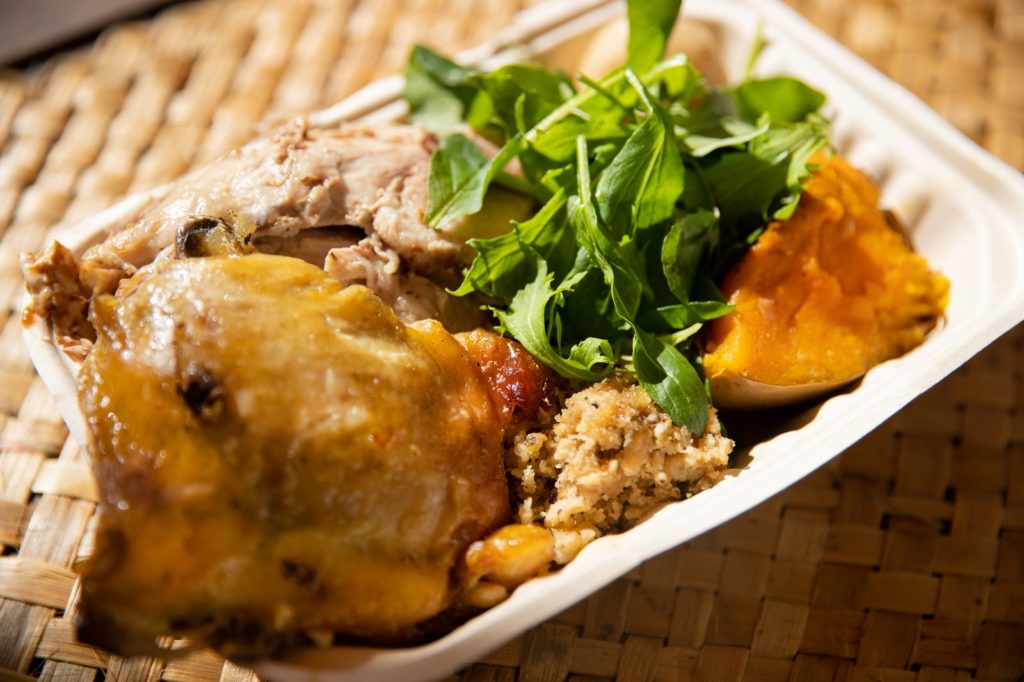28 Sep Megan Tunks: Oranga Kai
Kai sustains our tinana and nurtures our wairua. It enables us to demonstrate and express our aroha and our manaakitanga. Maintaining a healthy diet from hapūtanga to kaumātuatanga helps us maintain our whakapapa and ngā uri whakaheke.
We know the way we access, prepare, and eat our kai has changed. The way we live and work has an impact on our connection to the whenua, and in turn, access to our traditional food systems. The knowledge passed on from our tūpuna around traditional kai gathering practices, preparation and cooking has been lost amongst some of our whānau.
Research undertaken with rangatahi as part of a Growing the Puna (GTP) internship identified that rangatahi saw kai Māori as kai eaten in Māori settings and sometimes with whānau. Participants identified boil up, fried bread, kaimoana and rewena as kai commonly eaten in settings such as marae and sometimes with whānau. Participants commonly identified that they hadn’t really had the opportunity to learn about Māori food and how to gather and prepare it.
In another GTP project, the focus group participants (who were mātua/parents), identified the importance of the story behind the kai; how you grow, look after, prepare, and share with whānau. The participants identified the importance of the cultural knowledge of how our tūpuna used to eat, kai knowledge from different generations, and how this is transferred to whānau.

Wānanga, learning by doing, kōrero and haka were ways that our tūpuna shared knowledge. These are also methods we sometimes use today but contemporary tools such as the internet and social media are also increasingly teaching our whānau about traditional kai.
A well known haka written in 1992 by the late Ngapo Wehi (Whakatōhea, Ngāi Tūhoe, Te Whānau-a-Apanui, Ngāti Kahu, Ngāpuhi) and performed by his roopu, Te Waka Huia, identifies how strong, muscular and fit our bodies were, and the healthy kai we ate;
Nō mua i te taenga mai o tauiwi mā ina te pakari o te tinana Māori e
Me pakari rā ka tika nā te mea ko ana kai hoki rā
He kūmara, he pikopiko, he aruhe, huarākau, he ika, he manu me ngā kaimoana katoa e
Kūmara, pikopiko, huarākau, ika, manu and kaimoana as kai we consumed, but the arrival of tauiwi introduced tote – salt, huka – sugar, paura paraoa – yeast, alcohol and tobacco.
Nō te taenga mai o tauiwi mā ka mauria mai rā ētahi kai tino kino e kō aua kai hoki ra
He tote, he huka, paura parāoa, waipiro me te nanakia tupeka e
Flour, introduced by early settlers and used in trade, is used in rewena and fried bread. However, its affordability and accessibility soon meant its use grew amongst our whānau. A kai consumed in many settings (especially marae), but not a tūpuna kai.
The internet and YouTube offer many examples of tūpuna kai, along with ways of catching, harvesting and preparing the kai.
In 2014, Paora Hurihanganui, Kaiwhakahaere Matua at Te Papa Takaro o Te Arawa, followed a lifestyle of consuming tūpuna kai after his Te Arawa tūpuna.
Check out his korero here.
Traditional Māori methods of fishing are shared by one of our pakeke from Te Whānau-a-Apanui, Uncle Danny Poihipi
And there are many examples of mahinga kai from Ngāi Tahu
Moana NZ, a Māori owned fishing company, donates ika to Papatūānuku Marae in Māngere. The marae utilises the fish heads, frames and wings to help address whānau food security in Māngere. Ika provide an important source of sustenance for whānau and can be very cost effective in feeding whānau (depending on the ika type). YouTube clips provide a useful tool for any whānau that might not know how to scale, fillet and debone fish.
This YouTube clip from Moana Ltd provides information on how to do this
As a traditional method of cooking kai, hāngi is prepared in a ground pit, however due to time and convenience we often cook hangi above the ground in a cooker with gas. A recent episode on the newly launched Māori TV Life of Kai series featured Hāngi Master, Rewi Spraggon, championing and sharing his knowledge of traditional hāngi preparation with First Nations whānau in Canada.
Time plays a big part in influencing how and what we eat, along with how we participate in kori tinana. The time we have to access kai, the time we have to eat and prepare kai, the time we have to get out and exercise/play sport. Our knowledge and skills also play a part.
In Level 4 we saw increases in cooking at home, walking and biking as many of us had the time. By the time our second round of Covid lock downs happened many Iwi and Whānau Ora providers had learnt from round one and had time to negotiate and refine supply chains.
Through the Ministry of Social Development Community food response funding and food secure communities grants, solutions to address the additional demand and establish food secure communities are underway. Information regarding the successful providers/groups is published on the MSD website.
One such project is The Good Kai Project, a social enterprise which has been developed as a partnership between Ngāti Whātua ki Ōrākei, Waikato/Tainui, Ngāti Kuri and Waahi Pā. The project supported by funding from MSD and the Tindall Foundation activated kai boxes supplying kai at a lower rate than those commercial providers in the market. A co-operative model, the approach also draws on the networks within the Iwi and community to deliver the boxes.

The second round of Covid responses provided an opportunity to activate the model amongst tribal members and provided an opportunity for Tamaki based Te Whānau-a-Apanui tribal members to trial the boxes with support from hapu, the Iwi and MSD. Our TWAKT organising roopu streamlined the distribution process after our second round of kai distribution, working carefully within the constraints of Covid Level 3.
Nā, Megan Tunks



